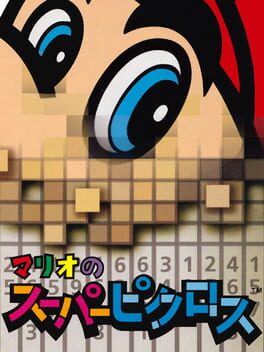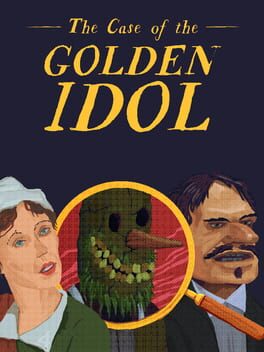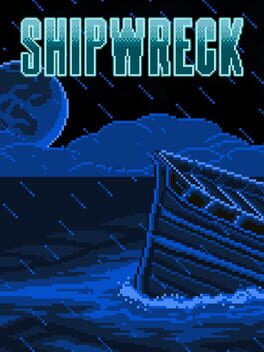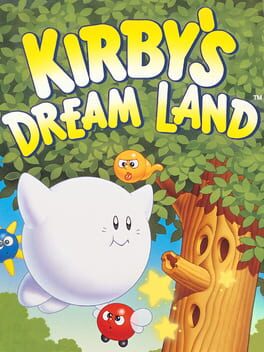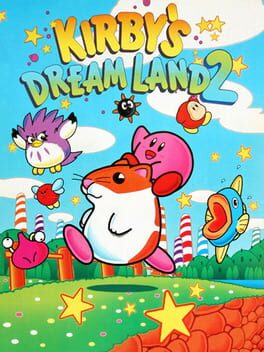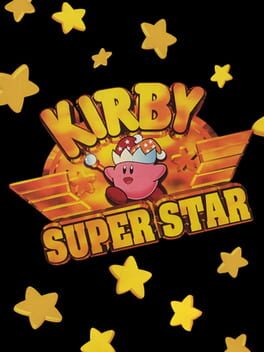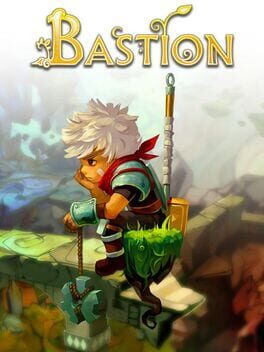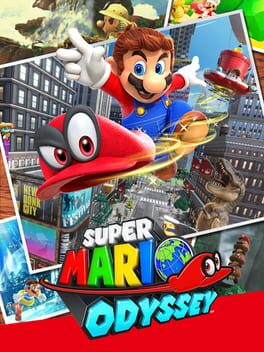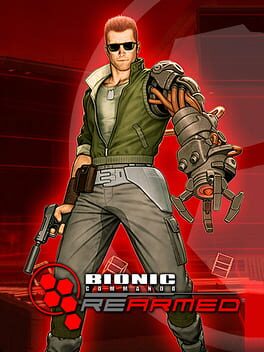whoshotvr
2022
In lots of ways, Stray feels like an old, PSX or PS2 era adventure game. There's a lot of talking and exploring, some fetching and trading and distracting, and some clumsy action sequences, and if that's all there were, then Stray wouldn't matter at all.
But thankfully it's set in a gorgeous, built out world, one that tells its own story as much as the residents do. It's (mostly) fun to play, motion is fluid and responsive, and nothing is very obtuse.
I'm not quite sure it entirely earned its ending and I was left wanting more from its final scene, just a little bit more.
But that said, it took me about 6 hours total and I did everything there seemed to be to do. Apparently I didn't get all the badges, which you seem to get for completing sets of tasks, so I am now wondering what I missed.
While I am sad they didn't stick with their original idea of setting this within the Kowloon Walled City (that's this team, right?), I get why they made some changes. Their story can be free of any political connection, they can build out their own environments and plot, and they can still evoke the feeling of that city and SE Asian slums in general without it needing to be real.
But thankfully it's set in a gorgeous, built out world, one that tells its own story as much as the residents do. It's (mostly) fun to play, motion is fluid and responsive, and nothing is very obtuse.
I'm not quite sure it entirely earned its ending and I was left wanting more from its final scene, just a little bit more.
But that said, it took me about 6 hours total and I did everything there seemed to be to do. Apparently I didn't get all the badges, which you seem to get for completing sets of tasks, so I am now wondering what I missed.
While I am sad they didn't stick with their original idea of setting this within the Kowloon Walled City (that's this team, right?), I get why they made some changes. Their story can be free of any political connection, they can build out their own environments and plot, and they can still evoke the feeling of that city and SE Asian slums in general without it needing to be real.
2022
About as perfect as a game like this can be. I had some minor frustrations (there was one thing that locked away half the game that I didn't find because I trusted a sign that said "SEALED FOREVER" and didn't pay attention (Rule #1: PAY ATTENTION)), but they were all ME problems.
I did just about everything, found all the stuff, got both endings, and some of the late game puzzles were about as satisfying as anything I've ever put together (Rule #2: Don't be afraid to look for hints, and don't be afraid to give up on puzzles completely because they don't interest you (like reading, for me, personally)). In many ways, this is an evolution of Fez, being one thing, then actually being another, then actually actually changing how you interpret the world around you, and learning those new interpretations just felt so goddamned good.
Its ultimate ending is bittersweet, because, like Fez and The Witness, and Shutter Island and Jacob's Ladder, I only get to experience it one way once. Every other time, I'll know. (Rule #3: Sometimes you just have to let something go)
I did just about everything, found all the stuff, got both endings, and some of the late game puzzles were about as satisfying as anything I've ever put together (Rule #2: Don't be afraid to look for hints, and don't be afraid to give up on puzzles completely because they don't interest you (like reading, for me, personally)). In many ways, this is an evolution of Fez, being one thing, then actually being another, then actually actually changing how you interpret the world around you, and learning those new interpretations just felt so goddamned good.
Its ultimate ending is bittersweet, because, like Fez and The Witness, and Shutter Island and Jacob's Ladder, I only get to experience it one way once. Every other time, I'll know. (Rule #3: Sometimes you just have to let something go)
Technically I played this on the Switch, but it was via their SNES emulator.
After Tunic so completely satiated me, I needed something familiar and warm, and this, the best Zelda, called to me. It only takes a few hours at this point, and it had been a few years, so I ran through it.
Everything that really needs to be said about this game has been said over the past 30 years, and across those decades, I have played this game, or parts of it, at least that many times. The first time was on release, back when the internet was still the schoolyard (see also: The Legend of Zelda and The Adventure of Link). Its evolution of the completely obtuse NES entries into something still challenging yet easier to read was wonderful in its time, and I feel like it still stands the test. I never look back on this one and think "How in the fuck did we ever do this?!?" when I absolutely do with its earlier entries.
Sure, following this, the entries got cuter, liked to hold your hand more, until they shouted answers into your ear, leaving nothing to the imagination.
But here, in Link to the Past, there was still a little shred of the feeling that you discovered something no one had ever found before, all the while knowing that that thing you found would give you an edge against whatever horrors you had to face in the next hole in the ground.
This time through, I played it through completion, and I saw the ending for probably the sixth or seventh time in my life (I had seen the first six dungeons two dozen times at least) the sharpest memory of that Ganon fight was not my first time, but almost ten years later, an adult in 1998, getting the game from a Software Etc. and playing it through in a weekend on a girlfriend's tiny CRT, shocked at how much better I was at it then, only to return it for my precious $10, in order to grab something else off their used games shelf)).
I guess what I'm saying is that playing this game is history, is memory, is not actually playing this game, but desperately grasping at the few shreds of that history that remain, those people I experienced it with, or near. Where are they now? Are they even still alive?
I'll probably play Soul Blazer next, because my heart aches, and no one did melancholy like Quintet in the 90s.
After Tunic so completely satiated me, I needed something familiar and warm, and this, the best Zelda, called to me. It only takes a few hours at this point, and it had been a few years, so I ran through it.
Everything that really needs to be said about this game has been said over the past 30 years, and across those decades, I have played this game, or parts of it, at least that many times. The first time was on release, back when the internet was still the schoolyard (see also: The Legend of Zelda and The Adventure of Link). Its evolution of the completely obtuse NES entries into something still challenging yet easier to read was wonderful in its time, and I feel like it still stands the test. I never look back on this one and think "How in the fuck did we ever do this?!?" when I absolutely do with its earlier entries.
Sure, following this, the entries got cuter, liked to hold your hand more, until they shouted answers into your ear, leaving nothing to the imagination.
But here, in Link to the Past, there was still a little shred of the feeling that you discovered something no one had ever found before, all the while knowing that that thing you found would give you an edge against whatever horrors you had to face in the next hole in the ground.
This time through, I played it through completion, and I saw the ending for probably the sixth or seventh time in my life (I had seen the first six dungeons two dozen times at least) the sharpest memory of that Ganon fight was not my first time, but almost ten years later, an adult in 1998, getting the game from a Software Etc. and playing it through in a weekend on a girlfriend's tiny CRT, shocked at how much better I was at it then, only to return it for my precious $10, in order to grab something else off their used games shelf)).
I guess what I'm saying is that playing this game is history, is memory, is not actually playing this game, but desperately grasping at the few shreds of that history that remain, those people I experienced it with, or near. Where are they now? Are they even still alive?
I'll probably play Soul Blazer next, because my heart aches, and no one did melancholy like Quintet in the 90s.
I finally finished this one. There were 300 puzzles total, and it just kept going and going and going, far more than I expected, but hey! It was 300 picross puzzles, so, great.
There were ones in the last few sets that were actually hard, where you have to start trying to predict, and that's not my favorite. Picross should never have guessing involved.
But! In the Wario puzzles, the last option in the menu yellows out blocks, like using a pencil, and if you select the left option when you are done, it completes them for you. Select the right option, it'll undo all your moves.
There were ones in the last few sets that were actually hard, where you have to start trying to predict, and that's not my favorite. Picross should never have guessing involved.
But! In the Wario puzzles, the last option in the menu yellows out blocks, like using a pencil, and if you select the left option when you are done, it completes them for you. Select the right option, it'll undo all your moves.
2022
A perfect conclusion to the small, quiet story started in the last entry, and a wonderful conclusion to the series as a whole. I don't want more of this, because there's nowhere else to go, nothing else to do that wouldn't just be retreading that same ground.
Ragnarok is very much a case of "if it ain't broke, don't fix it", as it adds very little to the formulas of the previous entry, for good reason. The last game was so tight, so well done, there was nothing that needed improvement or changing. Instead, Ragnarok introduces a few new, small elements that allow for some new puzzles without messing with perfection.
Ragnarok returns to all the same locations as the first game, but without reusing maps or areas. The maps have changed, drastically, due to the events of the first game. Most of this happens in the first chunk, and it's a good setup for the story that follows, which is about facing the consequences of your actions as it grapples with free will vs. prophecy.
The narrative continues to be very mature, and was very affecting ,not just for a game, but for a narrative in any medium. Characters continue to grow, and it is great to see games continue to use actors to actually act. As in the first game, many of the largest genuine emotional beats are entirely silent, a look from a character, a physical touch or movement. The actors say so much with so little, and it's still somewhat jarring to me to see actors acting in a video game.
As far as the gameplay, it's still crunchy and delicious. It feels so good to throw that ax, to call it back, to kick a dude off a cliff, and I absolutely loved the flexibility in accessability options this time around. The ability to change the difficulty on the fly meant that I could still experience everything the game had to offer, despite not being particularly great at games (after 35 years you'd think I'd be better at this).
The post-game this time around is less of a POST game and more of an epilogue. The events that take place are very much part of the story, and they are constructed in such a way that they lead you back through the world, meeting up with people one last time, seeing how the events of the game wrap up. It is, in many ways, like the endings of old SNES era RPGs, where you have to walk back through the world, all the way home.
It's really just all lovely, and I'm sad it's over, and I'm glad we left these characters before they were out of things to say, and while I don't want more from these characters, I am excited to see what this team does next.
EDIT/UPDATE: I didn't realize how much the post game was actually the real game, that that first set of credits were just there to mark the end of the big story, not the end of the actual story. And that actual ending was devastating. Not everything is wrapped up, but it's not left for a sequel we will (hopefully) never get, it's not wrapped up in the way that real life doesn't wrap everything up. Sometimes people are hurt and angry and there's nothing you can do about it. I think this is the best AAA game I have ever played in my 35 years of playing video games.
Ragnarok is very much a case of "if it ain't broke, don't fix it", as it adds very little to the formulas of the previous entry, for good reason. The last game was so tight, so well done, there was nothing that needed improvement or changing. Instead, Ragnarok introduces a few new, small elements that allow for some new puzzles without messing with perfection.
Ragnarok returns to all the same locations as the first game, but without reusing maps or areas. The maps have changed, drastically, due to the events of the first game. Most of this happens in the first chunk, and it's a good setup for the story that follows, which is about facing the consequences of your actions as it grapples with free will vs. prophecy.
The narrative continues to be very mature, and was very affecting ,not just for a game, but for a narrative in any medium. Characters continue to grow, and it is great to see games continue to use actors to actually act. As in the first game, many of the largest genuine emotional beats are entirely silent, a look from a character, a physical touch or movement. The actors say so much with so little, and it's still somewhat jarring to me to see actors acting in a video game.
As far as the gameplay, it's still crunchy and delicious. It feels so good to throw that ax, to call it back, to kick a dude off a cliff, and I absolutely loved the flexibility in accessability options this time around. The ability to change the difficulty on the fly meant that I could still experience everything the game had to offer, despite not being particularly great at games (after 35 years you'd think I'd be better at this).
The post-game this time around is less of a POST game and more of an epilogue. The events that take place are very much part of the story, and they are constructed in such a way that they lead you back through the world, meeting up with people one last time, seeing how the events of the game wrap up. It is, in many ways, like the endings of old SNES era RPGs, where you have to walk back through the world, all the way home.
It's really just all lovely, and I'm sad it's over, and I'm glad we left these characters before they were out of things to say, and while I don't want more from these characters, I am excited to see what this team does next.
EDIT/UPDATE: I didn't realize how much the post game was actually the real game, that that first set of credits were just there to mark the end of the big story, not the end of the actual story. And that actual ending was devastating. Not everything is wrapped up, but it's not left for a sequel we will (hopefully) never get, it's not wrapped up in the way that real life doesn't wrap everything up. Sometimes people are hurt and angry and there's nothing you can do about it. I think this is the best AAA game I have ever played in my 35 years of playing video games.
This is really more of a 4 1/2. I've got some minor quibbles, but it's just about perfect.
Completed all cases yesterday, the epilogue today, only used hints on the last case. I did get hung up on a clue I missed in the penultimate case, but that was a me problem.
The last case maybe relies a little too much on an unexplained leap of logic, but I get what they were going for. They wanted the revelation to happen while working through clues that made no sense, and it totally did, but I was left a little frustrated by that.
But just a little! The story it ends up telling is delicious, especially in how the seemingly unconnected cases you're solving do end up tying together (and how they don't tie together), but never with a little bow. People disappear between cases, years pass, people show up once and never again. It's a lovely little bit of writing.
The puzzles themselves are essentially glorified logic puzzles, the ones where you have names on the top and professions on the side and you eliminate the impossible by reading sentences like "Sarah plays volleyball with the boy with the red shirt". It's so SATISFYING to complete a page and see it flip green, to see those words fade away.
Just an overall great few hours, worth every penny, and I'm thrilled to see what this team does next.
Completed all cases yesterday, the epilogue today, only used hints on the last case. I did get hung up on a clue I missed in the penultimate case, but that was a me problem.
The last case maybe relies a little too much on an unexplained leap of logic, but I get what they were going for. They wanted the revelation to happen while working through clues that made no sense, and it totally did, but I was left a little frustrated by that.
But just a little! The story it ends up telling is delicious, especially in how the seemingly unconnected cases you're solving do end up tying together (and how they don't tie together), but never with a little bow. People disappear between cases, years pass, people show up once and never again. It's a lovely little bit of writing.
The puzzles themselves are essentially glorified logic puzzles, the ones where you have names on the top and professions on the side and you eliminate the impossible by reading sentences like "Sarah plays volleyball with the boy with the red shirt". It's so SATISFYING to complete a page and see it flip green, to see those words fade away.
Just an overall great few hours, worth every penny, and I'm thrilled to see what this team does next.
2014
The longer this game went on, the less enamored with it I was. It started off so charming, but the level design started wearing on me pretty quickly.
The game consists of a hub town, a completely empty overworld, and five dungeons. The dungeons are mazes full of monsters and traps, each capped off with a boss.
By the third dungeon, I was getting tired of the level design, which frequently has you flipping numerous switches to unlock doors in other rooms or off screen, with no clear indication what is happening where.
The final dungeon has multiple switches in multiple rooms needing to be flipped in order to open doors, leading to a LOT of backtracking and zigzagging across the map, trying to figure out what was next.
This was clearly a fun project for a few people to have fun playing around in, and I certainly can't fault them this. It was only a dollar, after all, and I willingly put the 3 hours into it.
The game consists of a hub town, a completely empty overworld, and five dungeons. The dungeons are mazes full of monsters and traps, each capped off with a boss.
By the third dungeon, I was getting tired of the level design, which frequently has you flipping numerous switches to unlock doors in other rooms or off screen, with no clear indication what is happening where.
The final dungeon has multiple switches in multiple rooms needing to be flipped in order to open doors, leading to a LOT of backtracking and zigzagging across the map, trying to figure out what was next.
This was clearly a fun project for a few people to have fun playing around in, and I certainly can't fault them this. It was only a dollar, after all, and I willingly put the 3 hours into it.
The best thing about this is the rewind button! That rewind button on these newer collections has really increased the quality of life (Mega Man 2 is now fun!).
Once every 10 years, I try to play these again. I always start Circle of the Moon, get halfway through Dissonance, and get to the end of Aria, and then I feel like I'm done. They aren't particularly great or memorable, in part because they are trying to be Symphony of the Night, which was lighting in a bottle.
Each entry has their own new, fun systems, but Circle and Dissonance both end in stupidly difficult boss fights that are nigh impossible without a lot of grinding to get the right cards/souls.
Any time you're in a room against a big thing, it's fine, because big things move slow and are easy to read on a small screen (GBA or Switch in handheld), but any time you have to go up against a thing that is your size, it sucks, because they move faster than you, and you just move like a turd.
But I got my $10 out of this collection, even as it reminded me of better games, in part because it also reminded me that there still hasn't been a new heir to the SOTN throne. It's been almost 30 years, so I don't think we're ever really going to get one.
So I guess this was pretty good (Dracula X stinks on ice though).
Once every 10 years, I try to play these again. I always start Circle of the Moon, get halfway through Dissonance, and get to the end of Aria, and then I feel like I'm done. They aren't particularly great or memorable, in part because they are trying to be Symphony of the Night, which was lighting in a bottle.
Each entry has their own new, fun systems, but Circle and Dissonance both end in stupidly difficult boss fights that are nigh impossible without a lot of grinding to get the right cards/souls.
Any time you're in a room against a big thing, it's fine, because big things move slow and are easy to read on a small screen (GBA or Switch in handheld), but any time you have to go up against a thing that is your size, it sucks, because they move faster than you, and you just move like a turd.
But I got my $10 out of this collection, even as it reminded me of better games, in part because it also reminded me that there still hasn't been a new heir to the SOTN throne. It's been almost 30 years, so I don't think we're ever really going to get one.
So I guess this was pretty good (Dracula X stinks on ice though).
Technically, I completed this within the Castlevania Collection on the Switch, but it's an NES faithful port, and the first time I ever beat it was on the NES, so we'll go with that?
You can't really rate Simon's Quest anymore, not this far in the future. It's not really fair to it, given how advanced it was for its time and how well it technically still plays (unlike, say, Dracula X, which was made AFTER some of the best Castlevania games and still managed to play worse than the first one).
It's so hard to imagine what this period in video game history was like. Video games didn't get sequels, you didn't really get MORE of them. Sometimes an arcade game would get one, but it was either a more challenging version of the original (see: Millipede or Stargate) or something 100% unlike the original (see: Donkey Kong Jr. and Donkey Kong 3).
What Nintendo/Konami did with Mario 2 (I know), Zelda 2, and Castlevania 2 was, in retrospect, courageous and fascinating. Each game has little to no connection to the one before. In Mario 2, you can't stomp, you pick things up and throw them, and there are no timers, Zelda 2 is a side-scroller, and Castlevania 2 is, well it's a proto-Symphony of the Night.
You are Simon, you start in a town, and you can go left and right. People talk to you and give you obtuse/poorly translated clues, and you figure them all out (or you don't).
There are five dungeons in the game, each one a more complex 1 to 2 screen maze that are actually fun to navigate, there are 7 towns, with people who sell you upgrades and tools, and there is an actual sense of progression to the game, ending in an actual ghost town outside Castlevania.
Judging it today, after who knows how many Castelvania games there have been, it's not great, on par with the original in difficulty (in exploration and progress rather than gameplay), movement, and overall experience, but in 1987? It was fucking fantastic. It took us all year to figure out, making progress through schoolyard whispers and Nintendo Power magazine (with the occasional phone call to their hotline (don't tell my mom)).
Today, armed with just an annotated world map, you'll be fine, can even finish it in just a few hours. It's not difficult to actually play, the world is actually small enough to traverse from one side to the other in under 10 minutes, and it has amazing music and a desperate, oppressive vibe. If Iga said that he had never played this game, I'd call him a goddamned liar.
You can't really rate Simon's Quest anymore, not this far in the future. It's not really fair to it, given how advanced it was for its time and how well it technically still plays (unlike, say, Dracula X, which was made AFTER some of the best Castlevania games and still managed to play worse than the first one).
It's so hard to imagine what this period in video game history was like. Video games didn't get sequels, you didn't really get MORE of them. Sometimes an arcade game would get one, but it was either a more challenging version of the original (see: Millipede or Stargate) or something 100% unlike the original (see: Donkey Kong Jr. and Donkey Kong 3).
What Nintendo/Konami did with Mario 2 (I know), Zelda 2, and Castlevania 2 was, in retrospect, courageous and fascinating. Each game has little to no connection to the one before. In Mario 2, you can't stomp, you pick things up and throw them, and there are no timers, Zelda 2 is a side-scroller, and Castlevania 2 is, well it's a proto-Symphony of the Night.
You are Simon, you start in a town, and you can go left and right. People talk to you and give you obtuse/poorly translated clues, and you figure them all out (or you don't).
There are five dungeons in the game, each one a more complex 1 to 2 screen maze that are actually fun to navigate, there are 7 towns, with people who sell you upgrades and tools, and there is an actual sense of progression to the game, ending in an actual ghost town outside Castlevania.
Judging it today, after who knows how many Castelvania games there have been, it's not great, on par with the original in difficulty (in exploration and progress rather than gameplay), movement, and overall experience, but in 1987? It was fucking fantastic. It took us all year to figure out, making progress through schoolyard whispers and Nintendo Power magazine (with the occasional phone call to their hotline (don't tell my mom)).
Today, armed with just an annotated world map, you'll be fine, can even finish it in just a few hours. It's not difficult to actually play, the world is actually small enough to traverse from one side to the other in under 10 minutes, and it has amazing music and a desperate, oppressive vibe. If Iga said that he had never played this game, I'd call him a goddamned liar.
1992
This was one of the few Game Boy games I had that weren't RPGs (Final Fantasy games specifically (actually SaGa and Mana games)), so this one was a constant for short car rides and flights. It takes about 20-30 minutes to finish, there's a hard mode that's actually challenging, and the level design and boss fights are tight, especially considering the size of the screen and the speed they had to work with.
Replaying this on the Switch's Game Boy emulator was a fun way to spend an hour, and I still enjoy everything about this little game. It builds out four distinctly different areas that all have their own specific level designs and, most importantly, doesn't overstay its welcome. It's just a solid example of GBA platforming and may be among the best examples on that little handheld.
Replaying this on the Switch's Game Boy emulator was a fun way to spend an hour, and I still enjoy everything about this little game. It builds out four distinctly different areas that all have their own specific level designs and, most importantly, doesn't overstay its welcome. It's just a solid example of GBA platforming and may be among the best examples on that little handheld.
1995
Late era Game Boy games were weird. There were attempts at creating franchises on the system (like Kirby), but most often, what we got were smaller, somewhat clumsier versions of NES games. Mario Land 2 was a clumsier Mario 3 and this is a clumsier Kirby's Adventure.
Kirby's Adventure on the NES introduced enemy abilities, so this one went one further and introduced animal friends, but the friends don't feel very well fleshed out. I get that the fish is supposed to make swimming easier, but there were very few swimming levels and I ended up getting the fish more often than the other animals, which leads me to believe that it's randomized, which is NOT helpful.
The level design was more innovative than the first game, but also more frustrating. Rooms stopped being area specific and instead began repeating themselves. Some rooms were fun little puzzle/reflex areas, where breakaway floors would blend with breakable floors and you had to navigate standing in one place long enough to fall, figuring out how to break what you were standing on fast enough, and avoid enemies chasing you from above. These sections were fun, but they didn't really compliment Kirby's skill set very well. If I hadn't entered that area with the rock power, I'm not sure how I would have navigated that, so your success is based on luck or knowing what was coming, which wasn't really fun even back then.
All this said, people were still learning how to make tight games, and this was one step in the right direction. I'm glad I played it, but I don't think I ever need to play it again, and I sure as hell don't need to figure out how to find and get all the weird spinny things in the quiet rooms.
Kirby's Adventure on the NES introduced enemy abilities, so this one went one further and introduced animal friends, but the friends don't feel very well fleshed out. I get that the fish is supposed to make swimming easier, but there were very few swimming levels and I ended up getting the fish more often than the other animals, which leads me to believe that it's randomized, which is NOT helpful.
The level design was more innovative than the first game, but also more frustrating. Rooms stopped being area specific and instead began repeating themselves. Some rooms were fun little puzzle/reflex areas, where breakaway floors would blend with breakable floors and you had to navigate standing in one place long enough to fall, figuring out how to break what you were standing on fast enough, and avoid enemies chasing you from above. These sections were fun, but they didn't really compliment Kirby's skill set very well. If I hadn't entered that area with the rock power, I'm not sure how I would have navigated that, so your success is based on luck or knowing what was coming, which wasn't really fun even back then.
All this said, people were still learning how to make tight games, and this was one step in the right direction. I'm glad I played it, but I don't think I ever need to play it again, and I sure as hell don't need to figure out how to find and get all the weird spinny things in the quiet rooms.
1996
I rented this way back when and played through the immediately available games before returning it. I found it totally fine. I've since tried to go back to it, but there's something about it that never grabbed me.
This time around, I got to it by starting Kirby's Dream Land 3, but that was just really boring, so I moved on to this one, and this time, I played it all the way through.
It could be because I played that first game so much, but it feels like adding in all the additional powers and ways to use those powers made the game a little more of a slog. Half the time, I found the game more fun to play without powers at all, and making powers into a partner just ensured that the partner ended up in my way all the time (although we did make out a lot (baby bird? I'm not sure)).
I did really like all the different game styles here, and think HAL was very effective in taking the basic core gameplay and applying it to multiple different game styles.
In the end, after beating all five games and the arena, the game kind of... stops? Each game had a tiny ending, and then the game itself just had no more to offer.
This time around, I got to it by starting Kirby's Dream Land 3, but that was just really boring, so I moved on to this one, and this time, I played it all the way through.
It could be because I played that first game so much, but it feels like adding in all the additional powers and ways to use those powers made the game a little more of a slog. Half the time, I found the game more fun to play without powers at all, and making powers into a partner just ensured that the partner ended up in my way all the time (although we did make out a lot (baby bird? I'm not sure)).
I did really like all the different game styles here, and think HAL was very effective in taking the basic core gameplay and applying it to multiple different game styles.
In the end, after beating all five games and the arena, the game kind of... stops? Each game had a tiny ending, and then the game itself just had no more to offer.
2011
This is my third time through Bastion, on the third platform. I got this when it was first released on the 360's indie game platform (what a platform) and it just really got to me. I did everything, completed every challenge, cracked the nut open and licked the inside of the shell.
Over a decade and three other games later, this is still my favorite Supergiant game. It's a simple isometric action game, nice and crunchy, there are a ton of customization options for weapons, and there are ways to make the game harder, but it rarely seems unfair. The music is amazing and the whole concept of the narrator narrating your exploration of the world is excellent.
But it's really the story that is the standout here. It's a slow build, and every section of the world opens up more of the story, Rucks' story, the story of the cataclysm, and the story of the world after the fall. It's really lovely, and the options available to you in the climax are all viable, basically all endings are "Good" endings, and I love that, that no matter what choice you make, the outcome is hopeful.
It's just lovely.
Over a decade and three other games later, this is still my favorite Supergiant game. It's a simple isometric action game, nice and crunchy, there are a ton of customization options for weapons, and there are ways to make the game harder, but it rarely seems unfair. The music is amazing and the whole concept of the narrator narrating your exploration of the world is excellent.
But it's really the story that is the standout here. It's a slow build, and every section of the world opens up more of the story, Rucks' story, the story of the cataclysm, and the story of the world after the fall. It's really lovely, and the options available to you in the climax are all viable, basically all endings are "Good" endings, and I love that, that no matter what choice you make, the outcome is hopeful.
It's just lovely.
2017
It took them 20 years, but Nintendo finally figured out 3D Mario. After taking my kid to the Mario movie, I felt like a Mario, so I started this one up again. I just did the high level playthrough this time, just the fun stuff, just the stuff I liked, and ended with 250 moons.
This time through, I felt strangely empowered to not try to do everything. If there were purple coins that were a serious pain in the ass to get, I just... wouldn't. They don't do anything anyway! Wrestling the Jaxi or speed flower running isn't fun, so I chose... not to. It's not like getting all the moons matters. I think the last Mario game I played through to 100% completion was Super Mario World, which was also the last time that was fun (except for maybe that goddamned balloon level in the Secret World... of course, I do it every time I play the damned game...)
It was thrilling to just be able to play the parts I wanted to, to see that I could go fight a boss but with extra barriers but decide to just... not do that was so liberating and it made Mario so fun.
I am sorely tempted to try to get a copy of that Mario 3D collection from last year, even though I've never liked 64, just to play Sunshine and Galaxy again. Or I might... not.
This time through, I felt strangely empowered to not try to do everything. If there were purple coins that were a serious pain in the ass to get, I just... wouldn't. They don't do anything anyway! Wrestling the Jaxi or speed flower running isn't fun, so I chose... not to. It's not like getting all the moons matters. I think the last Mario game I played through to 100% completion was Super Mario World, which was also the last time that was fun (except for maybe that goddamned balloon level in the Secret World... of course, I do it every time I play the damned game...)
It was thrilling to just be able to play the parts I wanted to, to see that I could go fight a boss but with extra barriers but decide to just... not do that was so liberating and it made Mario so fun.
I am sorely tempted to try to get a copy of that Mario 3D collection from last year, even though I've never liked 64, just to play Sunshine and Galaxy again. Or I might... not.
Every few years, I go back to Steam and play through some old favorites. This is one of those. It is essentially a reskinned version of the NES game, with very little additions. Level layouts, movement, and gameplay is all virtually identical, complete with the pretty rude difficulty spikes (like that fucking dock halfway through).
We do get almost entirely new bosses (instead of big reactors we get actual puzzle bosses) and a new last level (the worst addition), and we get the ability to change weapons on the fly instead of having to pick a layout on your way into a level.
There are challenge rooms and two extra hard bonus levels, but those aren't my thing at all, so I always skip them, because they don't really add anything to the experience, and Bionic Commando is one of those games that was always 80% experience. I love it.
We do get almost entirely new bosses (instead of big reactors we get actual puzzle bosses) and a new last level (the worst addition), and we get the ability to change weapons on the fly instead of having to pick a layout on your way into a level.
There are challenge rooms and two extra hard bonus levels, but those aren't my thing at all, so I always skip them, because they don't really add anything to the experience, and Bionic Commando is one of those games that was always 80% experience. I love it.



